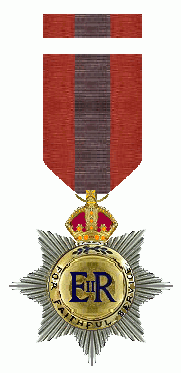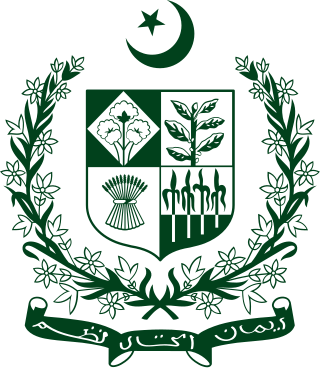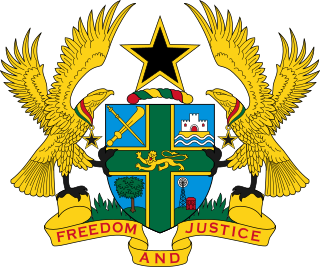Related Research Articles
In the United Kingdom and the British Overseas Territories, personal bravery, achievement, or service are rewarded with honours. The honours system consists of three types of award:

Emperor or Empress of India was a title used by British monarchs from 1 May 1876 to 22 June 1948 to signify their sovereignty over the Indian Empire as its imperial head of state. The image of the emperor or empress appeared on Indian currency, in government buildings, railway stations, courts, on statues etc. Oaths of allegiance were made to the emperor or empress and the lawful successors by the governors-general, princes, governors, commissioners in India in events such as imperial durbars.

The Most Excellent Order of the British Empire is a British order of chivalry, rewarding contributions to the arts and sciences, work with charitable and welfare organizations, and public service outside the civil service. It was established on 4 June 1917 by King George V and comprises five classes across both civil and military divisions, the most senior two of which make the recipient either a knight if male or dame if female. There is also the related British Empire Medal, whose recipients are affiliated with, but not members of, the order.

The Royal Victorian Order is a dynastic order of knighthood established in 1896 by Queen Victoria. It recognises distinguished personal service to the monarch, members of the royal family, or to any viceroy or senior representative of the monarch. The present monarch, King Charles III, is the sovereign of the order. The order's motto is Victoria. The order's official day is 20 June. The order's chapel is the Savoy Chapel in London.

The King's Official Birthday is the selected day in most Commonwealth realms on which the birthday of the monarch is officially celebrated in those countries. It does not necessarily correspond to the date of the monarch's actual birth.
A Royal Style and Titles Act, or a Royal Titles Act, is an act of parliament passed in the relevant country that defines the formal title for the sovereign as monarch of that country. This practice began in 1876, when the Parliament of the United Kingdom passed the Royal Titles Act. By that law, and the subsequent Royal Titles Act 1901 and Royal and Parliamentary Titles Act 1927, the monarch held one title throughout the British Empire. Following the enactment of the Statute of Westminster 1931, the governments of the now separate and independent realms sharing one person as sovereign agreed in 1949 that each should adopt its own royal style and title, which was done in 1952. As colonies became new realms, they passed their own royal style and titles acts. Most of the laws were created during the reign of Queen Elizabeth II.

The monarchy of New Zealand is the constitutional system of government in which a hereditary monarch is the sovereign and head of state of New Zealand. The current monarch, King Charles III, acceded to the throne following the death of his mother, Queen Elizabeth II, on 8 September 2022 in the United Kingdom. The King's elder son, William, Prince of Wales, is the heir apparent.
The precise style of the British sovereign has varied over the years. It is chosen and officially proclaimed by the sovereign. In 2022, King Charles III was proclaimed by the Privy Council to have acceded to the throne with the style:
Charles the Third, by the Grace of God of the United Kingdom of Great Britain and Northern Ireland and of His other Realms and Territories King, Head of the Commonwealth, Defender of the Faith

The Imperial Service Order was established by King Edward VII in August 1902. It was awarded on retirement to the administration and clerical staff of the Civil Service throughout the British Empire for long and meritorious service. Normally a person must have served for 25 years to become eligible, but this might be shortened to 16 years for those serving in unhealthy climates abroad. There is one class: Companion. Both men and women are eligible, and recipients of this order are entitled to use the post-nominal letters 'ISO'.

The Royal Victorian Chain is a decoration instituted in 1902 by King Edward VII as a personal award of the monarch. It ranks above the Royal Victorian Order, with which it is often associated but not officially related. Originally reserved for members of the royal family, the chain is a distinct award conferred only upon the highest dignitaries, including foreign monarchs, heads of state, and high-ranking individuals such as the Archbishop of Canterbury.
The New Year Honours is a part of the British honours system, with New Year's Day, 1 January, being marked by naming new members of orders of chivalry and recipients of other official honours. A number of other Commonwealth realms also mark this day in this way.

The monarchy of Australia is a key component of Australia's form of government, embodied by the Australian sovereign and head of state. The Australian monarchy is a constitutional one, modelled on the Westminster system of parliamentary government, while incorporating features unique to the constitution of Australia.

From 1947 to 1956, the Dominion of Pakistan was a self-governing country within the Commonwealth of Nations that shared a monarch with the United Kingdom and the other Dominions of the Commonwealth. The monarch's constitutional roles in Pakistan were mostly delegated to a vice-regal representative, the governor-general of Pakistan.

Elizabeth II was Queen of Ghana from 1957 to 1960, when Ghana was an independent sovereign state and a constitutional monarchy. She was also queen of the United Kingdom and other sovereign states. Her constitutional roles in Ghana were delegated to the governor-general of Ghana.
Crown Honours Lists are lists of honours conferred upon citizens of the Commonwealth realms. The awards are presented by or in the name of the reigning monarch, currently King Charles III, or his vice-regal representative.
References
- ↑ "The Birthday Gazette" . Broad Arrow. 10 June 1876. p. 3. Retrieved 23 November 2018.
- ↑ "No. 27374". The London Gazette (Supplement). 9 November 1901. p. 7287.
- ↑ "No. 27376". The London Gazette . 12 November 1901. p. 7291.
- ↑ "Queen's Birthday Honours List delayed until autumn amid coronavirus". Metro. UK. 20 May 2020. Retrieved 13 July 2020.